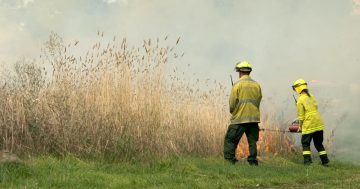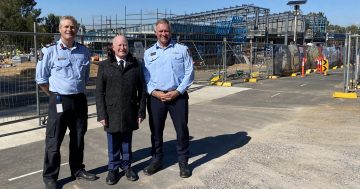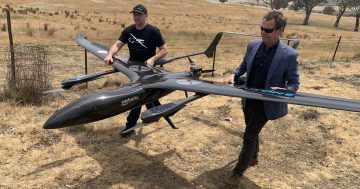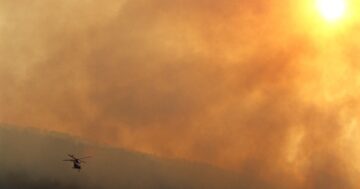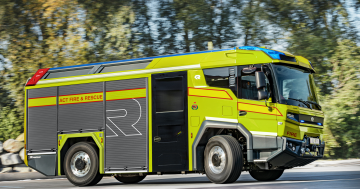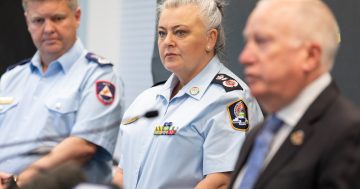
Indra says the fire-detection technology reduces the number of fires by 40 per cent and the average burned area by 30 per cent. Photo: Gary Hooker ACT RFS via ESA Twitter.
Six new fire and smoke detection cameras that can identify threats behind hills and in forests will be rolled out across the ACT as part of the mid-year Budget update, docking the Territory’s bottom line by $1 million.
The $976,000 spend on the cameras and seven new electronic fire danger rating signs will help the Emergency Services Agency (ESA) make sure the ACT is more prepared going into the next bushfire season, Minister for Police and Emergency Services Mick Gentleman said.
“At the request of the ESA, we are funding a six-month trial of fire and smoke detection cameras in key elevated locations across Canberra to establish how they could assist with early fire detection,” Mr Gentleman said.
“The ACT Government is investing $976,000 in the 2019-20 Budget Review, which adds to our $2.65 million for strengthening bushfire preparedness and ACT Rural Fire Service partnerships in the 2019-20 Budget.
“This includes continuing the ACT’s contribution to the National Emergency Alert system.”
The ESA is working on the camera technology with Indra, a Spanish information technology and defence systems company. The cameras will be installed on towers around the ACT to autonomously detect bushfire indications like smoke and flames.
“They will assist our ESA staff and rural bushfire staff in spotting fires. They will be in addition to our staff. Our staff do an important role in looking after bushfires through their spotting of fires on the towers, but sometimes it is a little dangerous to put staff up in the towers.
“Now, we can remove staff safely and still have a good vision of what is going on throughout the Territory. They will be able to look at not just the forested and rural areas of the ACT, but the urban areas as well.”
According to Indra, the cameras have 37-times zoom, a detection range of up to 15 km (around 700 square km per lookout), and provide 360-degree real-time analysis of temperature, humidity, direction and wind speed.
The technology is capable of detecting fires located behind hills and reduces the number of fires by 40 per cent and the average burned area by 30 per cent, Indra says.
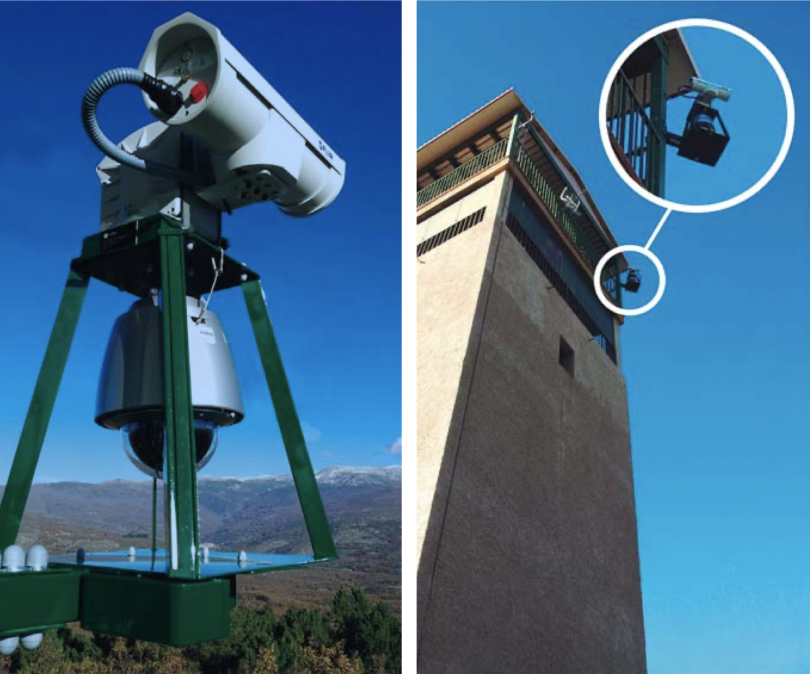
The new Indra bushfire detection cameras. Photo: Indra.
The trial period will be used to examine the reliability and accuracy of the cameras, with the cameras being tested in the cooler seasons with lightning strikes and storms ahead of the next fire season.
“I would like to see early indications of how successful they are, and how trustworthy they are – we do not want too many false readings,” Mr Gentleman said.
Mr Gentleman also told reporters that firefighting capabilities in the ACT would “certainly” receive more funding, but did not provide further detail.
“We have more plans for increasing our firefighting force across the ACT, particularly the urban force,” he said.
“There is more money for urban firefighters, for urban equipment and new stations in the ACT as well.”
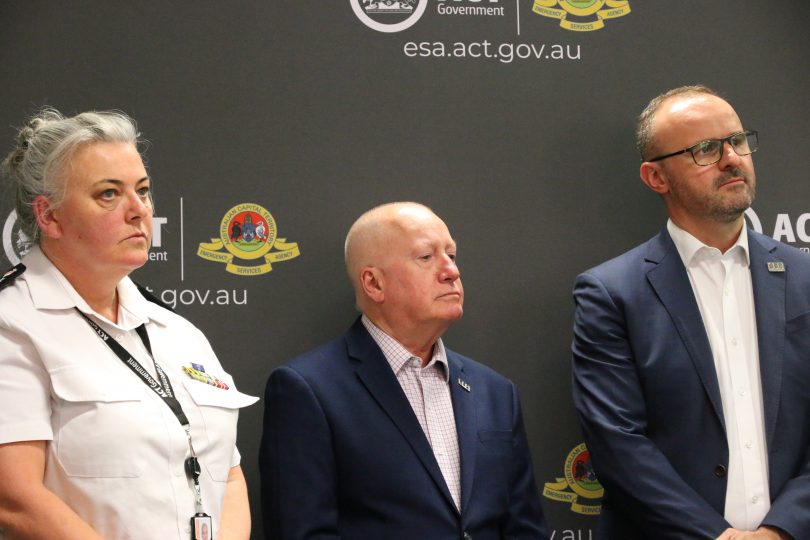
ESA Commissioner Georgeina Whelan, Emergency Services Minister Mick Gentleman and Chief Minister Andrew Barr. Photo: Dominic Giannini
The United Firefighters Union of Australia ACT Branch has previously called on the ACT Government to fund an extra 94 firefighters, two new fire stations and three more trucks in this year’s budget at an estimated cost of $48 million.
Overtime for ESA staff is also set to impact the Budget, with Mr Gentleman saying a rolling log of costs will be presented to him soon.
“I am advised by ESA that they have kept a rolling log of costs during this fire season and we will have that very shortly. But overtime is an important, integral part of shift work,” he said.
“We budget for overtime, but not in a sense where we have had to draw so many resources.
“This will be a cash cost to ESA and, of course, we will be writing to the Commonwealth and asking for support for our extra costs, both in people that are working in businesses across the ACT but also our ESA as well,” he said.












